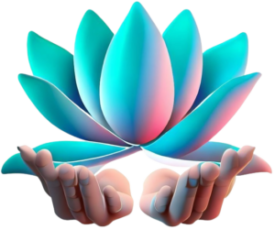 Red Light Therapy: The Non-Invasive Anti-Aging Solution You Need
Red Light Therapy: The Non-Invasive Anti-Aging Solution You Need
Introduction
Red light therapy has gained popularity in recent years for its numerous benefits in anti-aging and overall skin health. This non-invasive treatment uses red light wavelengths to stimulate collagen and elastin production, reduce inflammation, and improve skin texture and tone. In this article, we will explore the science behind red light therapy and its effectiveness in reducing wrinkles, fine lines, acne, and other skin conditions. We will also compare red light therapy to other anti-aging treatments.
What is Red Light Therapy and How Does it Work?
Red light therapy, also known as low-level light therapy or photobiomodulation, is a non-invasive treatment that uses red or near-infrared light wavelengths to stimulate cellular function in the body. These wavelengths penetrate the skin and are absorbed by the mitochondria, the energy-producing powerhouses of our cells. This stimulates the production of adenosine triphosphate (ATP), which provides energy for cellular processes.
Red light therapy works by increasing blood flow and oxygenation to the treated area, promoting healing and reducing inflammation. It also stimulates the production of collagen and elastin, proteins that are essential for maintaining healthy skin. Collagen gives our skin its structure and elasticity, while elastin allows it to stretch and bounce back. As we age, the production of collagen and elastin decreases, leading to wrinkles, fine lines, and sagging skin. Red light therapy helps to counteract this by stimulating the production of these proteins.
The Science Behind Red Light Therapy and Anti-Aging
The science behind red light therapy and its anti-aging effects lies in its ability to stimulate collagen and elastin production. Collagen and elastin are proteins that are essential for maintaining the structure and elasticity of our skin. As we age, the production of these proteins decreases, leading to wrinkles, fine lines, and sagging skin.
Red light therapy stimulates collagen and elastin production by increasing blood flow and oxygenation to the treated area. The red light wavelengths penetrate the skin and are absorbed by the mitochondria, which stimulates the production of adenosine triphosphate (ATP). ATP provides energy for cellular processes, including the production of collagen and elastin.
By increasing collagen and elastin production, red light therapy helps to improve skin texture, tone, and firmness. It can also reduce the appearance of wrinkles and fine lines, as well as improve skin elasticity. Additionally, red light therapy has been shown to reduce inflammation and oxidative stress, which can contribute to premature aging.
Benefits of Red Light Therapy for Skin Health and Anti-Aging
Red light therapy offers numerous benefits for skin health and anti-aging. One of the main benefits is its ability to improve skin texture, tone, and firmness. By stimulating collagen and elastin production, red light therapy helps to restore the structure and elasticity of the skin, resulting in a smoother and more youthful appearance.
In addition to improving skin texture, red light therapy can also reduce inflammation and oxidative stress. Inflammation is a natural response of the body to injury or infection, but chronic inflammation can contribute to premature aging. Red light therapy has been shown to reduce inflammation by increasing blood flow and oxygenation to the treated area.
Oxidative stress occurs when there is an imbalance between free radicals and antioxidants in the body. Free radicals are unstable molecules that can damage cells and contribute to aging. Red light therapy helps to reduce oxidative stress by increasing the production of antioxidants in the body.
How Red Light Therapy Can Help Reduce Wrinkles, Fine Lines and Aid in Wound Healing
One of the main reasons people turn to red light therapy is its ability to reduce wrinkles and fine lines. As we age, the production of collagen and elastin decreases, leading to the formation of wrinkles and fine lines. Red light therapy stimulates collagen and elastin production, helping to restore the structure and elasticity of the skin.
By increasing collagen and elastin production, red light therapy can reduce the appearance of wrinkles and fine lines. It can also improve skin elasticity, allowing it to stretch and bounce back more easily. This can result in a smoother and more youthful appearance.
In addition to stimulating collagen and elastin production, red light therapy also helps to increase blood flow and oxygenation to the treated area. This promotes healing and reduces inflammation, which can contribute to the formation of wrinkles and fine lines. It also promotes faster healing of wounds and scars.
Red Light Therapy for Acne, Other Skin Conditions, and Hair Growth
In addition to its anti-aging benefits, red light therapy has also been shown to be effective in treating acne and other skin conditions. Acne is a common skin condition that occurs when hair follicles become clogged with oil and dead skin cells. This can result in the formation of pimples, blackheads, and whiteheads.
Red light therapy can help to reduce acne by targeting the bacteria that contribute to its formation. The red light wavelengths penetrate the skin and kill the bacteria that cause acne, reducing inflammation and promoting healing.
In addition to treating acne, red light therapy has also been shown to be effective in treating other skin conditions such as psoriasis, eczema, and rosacea. It can reduce inflammation, promote healing, and improve overall skin health.
Some studies suggest that red light therapy might stimulate hair follicles and promote hair growth in individuals with androgenetic alopecia (pattern baldness).
Red Light Therapy vs. Other Anti-Aging Treatments: Which is Better?
When it comes to anti-aging treatments, there are many options available, including creams, serums, and surgical procedures. Each treatment has its own benefits and drawbacks, and the best option for you will depend on your individual needs and preferences.
Red light therapy offers a non-invasive and natural alternative to other anti-aging treatments. It stimulates collagen and elastin production, reduces inflammation, and improves skin texture and tone. Unlike creams and serums, which only provide temporary results, red light therapy works at the cellular level to promote long-term skin health.
While red light therapy may not provide the same immediate results as injections or surgical procedures, it offers a safe and effective option for those who prefer a more natural approach to anti-aging. It is also more affordable and convenient than many other treatments, as it can be done at home with the use of a handheld device or light panel.
Safety and Side Effects of Red Light Therapy
Red light therapy is generally considered safe when used as directed. However, there are some potential side effects to be aware of. These can include temporary redness, dryness, or sensitivity of the skin. These side effects are usually mild and resolve on their own within a few hours or days.
To minimize the risk of side effects, it is important to use red light therapy as directed and avoid overexposure. Start with shorter treatment times and gradually increase the duration as your skin becomes accustomed to the therapy. If you experience any persistent or severe side effects, discontinue use and consult a healthcare professional.
It is also important to protect your eyes from the red light wavelengths by wearing goggles or keeping your eyes closed during the treatment. Prolonged exposure to the red light wavelengths can potentially damage the eyes.
Red Light Therapy for Pain Relief and Other Health Benefits
In addition to its anti-aging benefits, red light therapy has also been shown to be effective in relieving pain and promoting overall health. It can reduce inflammation, improve circulation, and stimulate the production of endorphins, which are natural painkillers produced by the body.
Red light therapy has been used to treat a variety of conditions, including osteoarthritis, rheumatoid arthritis, fibromyalgia, muscle soreness, and joint pain. It can also improve mood and sleep, as well as enhance athletic performance and recovery.
Athletes and individuals engaged in physical activities might benefit from red light therapy as it could potentially aid in muscle recovery, reduce muscle fatigue, and improve overall performance.
Red light therapy might help improve joint health by reducing inflammation and promoting tissue repair, which could be beneficial for people with conditions like arthritis.
There is emerging research indicating that red light therapy might influence mood and sleep patterns. It could potentially help with conditions like seasonal affective disorder (SAD) and improve sleep quality.
Some studies suggest that red light therapy might have positive effects on cognitive function and neuroprotection. This area of research is still developing.
Conclusion
Red light therapy offers numerous benefits for anti-aging and overall skin health. It stimulates collagen and elastin production, reduces inflammation, and improves skin texture, tone, and firmness. It can also reduce the appearance of wrinkles and fine lines, as well as improve skin elasticity.
In addition to its anti-aging benefits, red light therapy can also be used to treat acne and other skin conditions. It is a safe and effective alternative to other anti-aging treatments, offering a non-invasive and natural approach to skin rejuvenation.
If you are interested in trying red light therapy for yourself, consult with Brandy Paschall to determine the best approach for your individual needs and goals. With regular use, red light therapy can help to improve your skin health and promote a more youthful appearance.
Ready to book your session?
Your cost: $10 per session / $90 for 10 sessions. Get in touch today!




You must be logged in to post a comment.